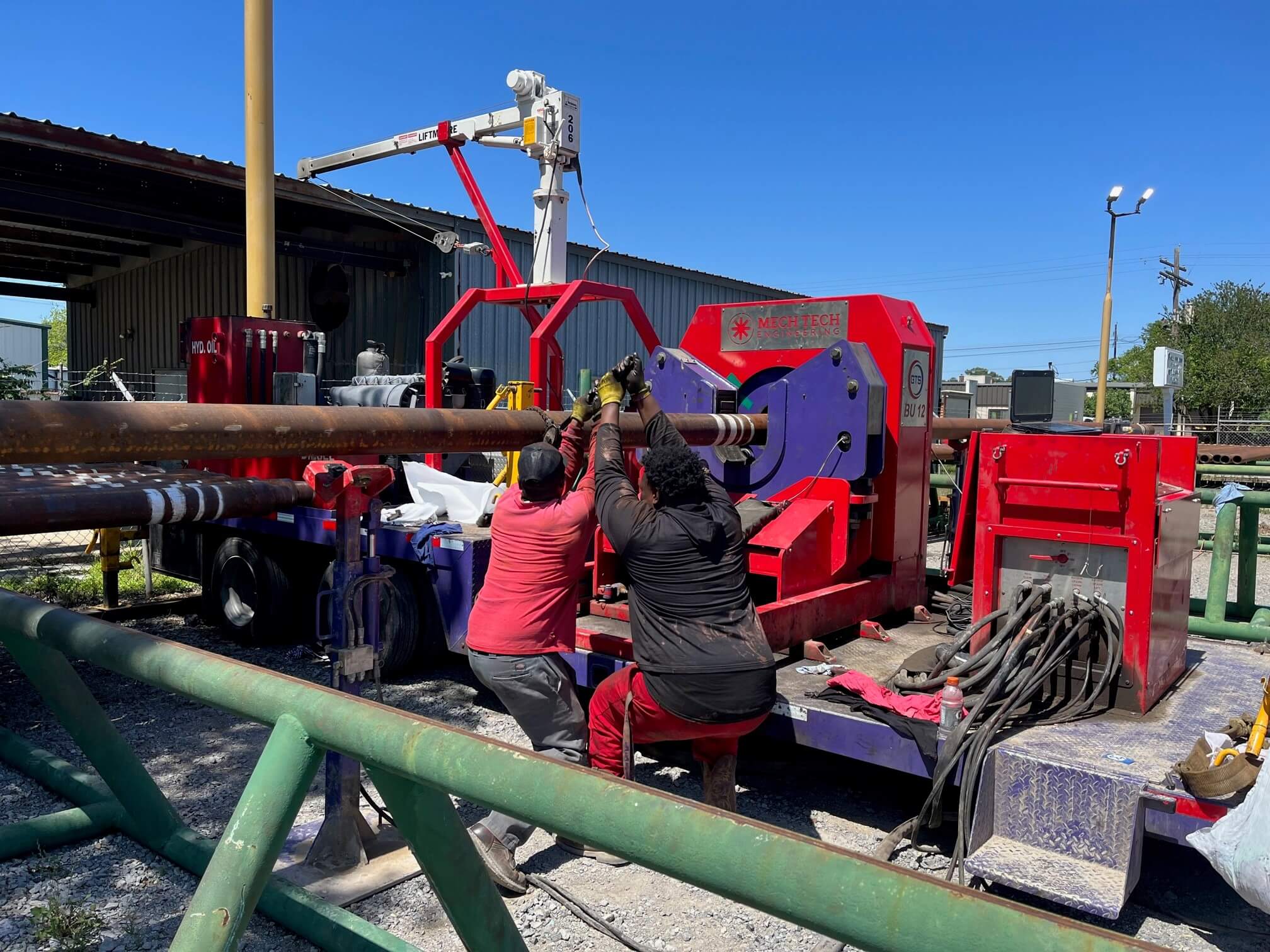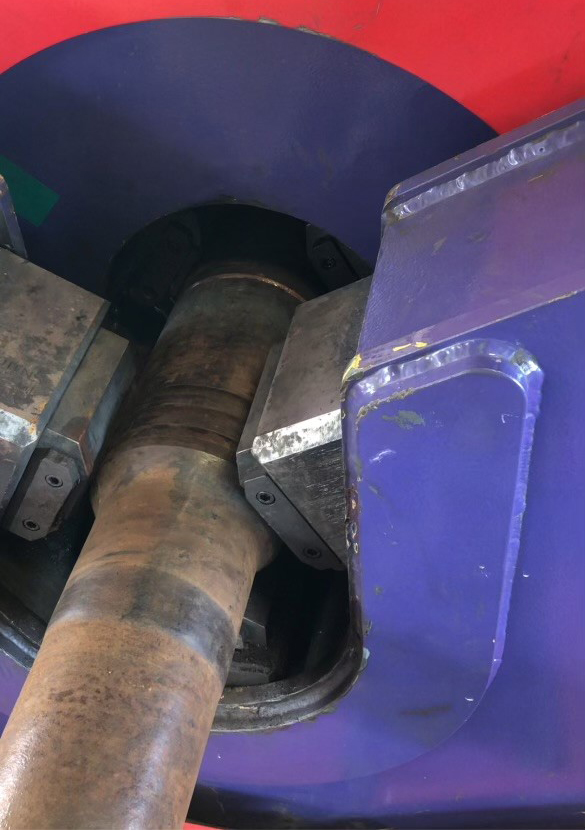What’s the best practice to use when dealing with breaking in new tool joints? It’s been proven time and again over the last century how important it is, therefore; this article will give some insight about why and how this is done. First and foremost, we must understand that shiny smooth machined surfaces are more apt to gall than those which have had some use. The services of tripping in and out of the first few bores allow the thread surfaces undergo certain changes which offer more resistance to galling, therefore; the initial makeup of new connections and the first few trips are the most critical and extra care is essential to giving longer trouble-free service.
Upon completion of cutting fresh connections, the next step in the process is etching the shiny new surfaces. Whether using zinc phosphate, copper sulphate, sand blasting, or shot peening, these methods have proved to be highly effective procedures for making thread compound stick to the rougher surfaces.

Phosphating and copper sulphate use acid to etch the steel and typically leave a discolored appearance. Phosphate gives off a dark grey color while copper sulphate starts off shiny and becomes a dulled copper color over a day or so. Sand blasting is a good way to create etching and shot peening is just a much more controlled way of achieving the same. It’s imperative to know that surface preparation, even though it mars the material a bit, enables better lubrication and can become the “make it or break it” factor.

Once etching of the connections is achieved, the next step deals with thread compound. Applying the right compound is crucial for tool joints. There are several compounds out there but only the ones for the specific purpose of lubricating tool joints should be used. Tool joints and other rotary shouldered connections are subject to high torsional loads in service which separates them from their high temp, no-leak, finer thread, casing and tubing cousins that need their own compounds. Under high unit stress, galling or seizing may occur without the benefit of a separating film (i.e. pipe dope). Thread compounds provide this film and the proper compounds will also help minimize excessive make-up. Under high torsional loads, ordinary greases or oils are squeezed out and the separating film is eliminated or breaks down. Compounds containing soft carbon-based fibers (biodegradable) or metallic fillers do not squeeze out as readily and will withstand higher unit stresses, however; under some circumstance’s unit stresses between surfaces become so high that even those compounds break down. Thread compounds containing sufficient additives are recommended for rotary shoulder connections. Such provide the desired properties and have proven the most successful for tool joints subjected to all types of service.
Finally, after QC checks are done, thread compound applied, and new connections are clearly marked, we’re at the moment of truth…make & break. Typically, two new connections (box and pin / pipe to pipe) are mated together and torqued up 3 X to a graduated level of ultimate make-up torque 50%, 55% & 60% (Ex. 6 5/8” FH con ultimate torque = 100k ft/lbs. so, the three torques are 50k, 55k & 60k ft/lbs.) Digital readouts of the specific callout for certain torque levels for box or pin as per joint number should be offered from any reputable make & break company. During this process, the connection has begun its journey towards becoming work hardened enough to stay in fairly decent shape… until the next over-torque or recut.
Occasionally, connections are cut in such a way that the pin is cut a tad bit large and box is a tad bit small which can leave no room for the threads to engage properly…. forcing the connections to gall together. Believe it or not, when there’s no room, there’s not even room for the dope and therein lies the only unfortunate solution…get the torch.
A typical SOP for a make break company will require a good cleaning and visual inspection of the first ~3 connections and then checking every 10th one thereafter. If any damage is found showing the slightest signs of galling, those damages should be reported to the machine shop. This is where accountability comes into play. It’s expected that any descent machine shop who’s been in business a while should be willing to accommodate a make & break crew and amend any issues (i.e. galling or damage) that should arise during the torquing process. The shop is obligated to relay the report to the customer and be open should damage occur. A typical response to significant damage from both parties is that an agreement be made to rectify the issue by way of chasing the threads (modifying the incorrect cons) before the pipe leaves for a job…. Major problem averted. Once the whole process is completed and thread integrity established, the connections are typically re-doped, protectors installed and all’s ready for service.
There are several more reasons to make / break before the next bore begins like saving rig time instead of rushing to do make / break while drilling a pilot hole and besides, It would be a shame if the connections didn’t function properly at crunch time on location. A huge benefit to completing a successful break in process is the confidence builder for both machine shop and driller… just knowing that the threads are near perfect and ready to perform as designed.
Just a little disclaimer…if the plan is to follow through with make & break, it’s highly recommended that the conversation be had in advance with a trusted / certified machine shop just so higher than normal expectations can be met. Once everyone involved (drillers, machine shop and M/B crew) becomes aware of what, how and why this process of “seasoning” new connections is so important, a true team effort can enable a seamless process where time constraints can be met.
Holly Pipe & NST Headquarters
406 Mecca St. Lafayette, LA 70508